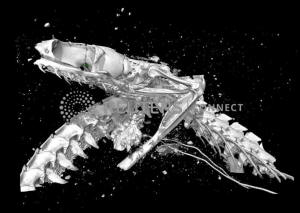Scientists peer inside ancient Egyptian cat, snake and bird mummies
 Send a link to a friend
Send a link to a friend
 [August 21, 2020]
By Will Dunham [August 21, 2020]
By Will Dunham
WASHINGTON (Reuters) - Scientists are
gaining new insight into the ancient Egyptian practice of mummifying
animals, using high-resolution 3D scans to peer inside mummies of a cat,
a bird and a snake to learn about their treatment before being killed
and embalmed.
Researchers on Monday said they digitally "unwrapped" and "dissected"
the three mummies using X-ray micro CT scanning, which generates
three-dimensional images with a resolution 100 times greater than a
medical CT scan. Actual unwrapping can damage and dislodge structures
within a mummy.
Ancient Egyptians mummified not only human corpses but millions of
animals including cats, dogs, birds, snakes and crocodiles, particularly
during a period of more than 1,000 years starting around 700 BC.

The three mummies apparently were made as "votive offerings" to gods at
temples to act as a go-between between deities and living people,
according to study co-author Carolyn Graves-Brown, curator of the Egypt
Centre at Swansea University in Britain. They were long held in
Swansea's collection and their precise age and origin in ancient Egypt
are unclear.
The researchers found evidence that the snake, a juvenile Egyptian
Cobra, had been denied water while alive, based on its calcified
kidneys, and apparently was killed by spinal fracture after being lifted
by the tail and whipped in the air.
The coiled snake's mouth contained a substance called natron and its jaw
was placed in a wide-open position, consistent with the animal possibly
having undergone the "opening of the mouth" ceremony, said Swansea
engineering professor Richard Johnston, lead author of the study
published in Scientific Reports.
[to top of second column]
|

The skull of a mummified Egyptian Cobra, with mouth open, revealed
by X-ray micro CT scanning that generates three-dimensional images
with a resolution 100 times greater than a medical CT scan, is seen
in this undated image released on August 20, 2020. Swansea
University/Handout via REUTERS

This ritual was conducted so mummified subjects could regain their
senses in the afterlife.
"This would be additional information supporting other evidence that
the 'opening of the mouth' was done on mummified animals. We know it
was carried out on humans," Graves-Brown said.
The domestic cat also was a juvenile: a 5-month-old kitten, based on
unerupted teeth within the lower jaw. Its neck was broken at the
time of death or during the mummification process.
The bird appears to be a Eurasian kestrel, of the falcon family.
Snakes were associated with numerous ancient Egyptian gods. Cats
were often associated with the fertility goddess Bastet. Raptors
were associated with sky gods such as Re and Horus.
"Like us, the ancient Egyptians used and abused animals,"
Graves-Brown said. "There is evidence from the mummified remains of
maltreatment."
(Reporting by Will Dunham; Editing by Sandra Maler)
[© 2020 Thomson Reuters. All rights
reserved.] Copyright 2020 Reuters. All rights reserved. This material may not be published,
broadcast, rewritten or redistributed.
Thompson Reuters is solely responsible for this content.
 |